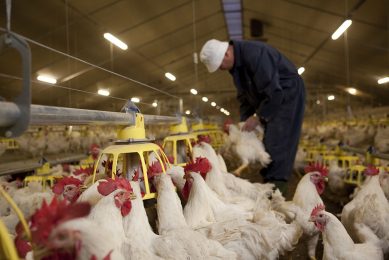Training for avian flu outbreak
There has never been a case of avian flu (H5N1) reported in the United States, and it has not mutated into a pandemic strain.
However, it killed more people last year in Asia than it did in 2005 and in 2004, and public health experts consider it a major threat.
In a simulation, Patient Zero in the 2007 avian flu pandemic died at 9:25 this morning. The object of the drill was to determine how the CDC would respond in a real epidemic.
Patient Zero was a fictional 22-year-old Georgetown University student who had just returned from visiting his family in Indonesia. How many of the student’s 10 roommates had he infected? How about the 40 others on the Georgetown swim team? One of them appeared to be dying in New York after a swim meet at Columbia University. What about the woman in Chicago who had died after being on his plane from Jakarta — were they all linked?
For the Centers for Disease Control and Prevention (CDC), the patient’s death was beside the point; what was important was the diagnosis of avian flu. The question for Dr. Julie L. Gerberding, the agency’s director, and her staff was whether it marked the beginning of a full-blown pandemic.
This was the CDC’s first “full functional†avian flu exercise, meaning that virtually everyone at its headquarters was involved in some way, including about 100 people packing the operations centre, where banks of computers and phones faced a wall full of television screens.
This was the CDC’s first “full functional†avian flu exercise, meaning that virtually everyone at its headquarters was involved in some way, including about 100 people packing the operations centre, where banks of computers and phones faced a wall full of television screens.













